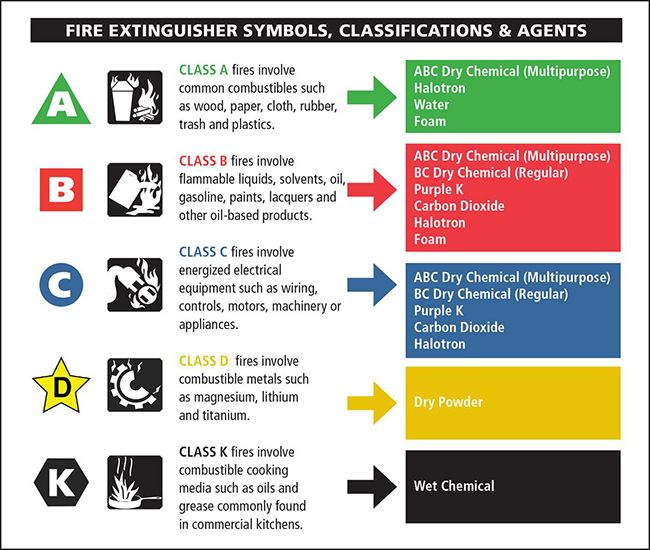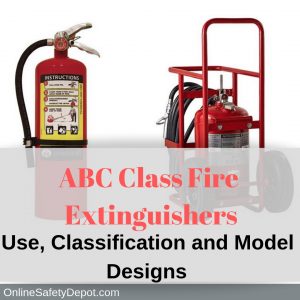

- ABCD FIRE EXTINGUISHERS PORTABLE
- ABCD FIRE EXTINGUISHERS PROFESSIONAL
- ABCD FIRE EXTINGUISHERS FREE
other types of extinguishers will still be required for other types of fires.a non insulated horn can cause frost burn if the user touches it when in use.offers no protection against reignition.should not be used in confined spaces as it is an asphyxiant gas.suitable for class B fires – flammable liquids including petrol, diesel, spirits, and paint.leaves no residue and is not as damaging to electrical equipment as powder.carbon dioxide is a non-conductor, so can be used on live electrical equipment (so is often suitable for server rooms).
ABCD FIRE EXTINGUISHERS FREE
smother fires more quickly in draught free conditions. These are often the most popular choice of fire extinguisher, and work by starving the fire of oxygen and therefore putting it out. 
They contain pure, compressed CO 2 (carbon dioxide) gas which is discharged through a horn as a strong jet of gas. This type of extinguisher is most suitable for class B and electrical fires.
foam discharge is easier to clean up than powder. suitable for use on electrical appliances, wood, paper and liquid fires. The foaming agent works by creating a barrier between the flame and the fuel. AFFF can be used on class A and B firesįoam extinguishers work similarly to water extinguishers by having a cooling effect on the fuel. foam breaks down the liquid drains off and forms a film on the burning surface. improved cooling properties compared with other types of foam fire extinguisher (excluding water types). produces a foam that acts initially as a blanket, covering the surface area and smoothering the fire. none or very limited cooling properties. can be used on class D fires involving metals and flammable liquids like petrol diesel, spirits and paints. can cause corrosion on electrical equipment. clean up can be costly and time consuming, as lots of residue is left after use. not as susceptible to frost as water based extinguishers. twice as effective as foam on class A fires. can be used in environments over a wide temperature range of -20☌ to 60°c (EN models). forms a barrier which excludes oxygen and prevents reignition. class C fires involving flammable gases like methane and butane. class B fires involving flammable liquids like petrol diesel, spirits and paints. class A fires involving combustible solids like wood and paper. the fire extinguisher fire rating for class B, C, F and electrical fires is lower than other types of fire extinguisher aligned with this class of fires.  can be used on class A, B, C, F, and electrical fires at 1m distance. leaves a small amount of residue after the fire has been extinguished. water, when heated, turns into steam and evaporates. water is an electrical conductor, making the extinguisher unsuitable if the class of fire has an electrical supply, or for use near live electrical equipment. does not create a mess or long term damage after the fire has been extinguished, and allows for a shorter business contingency plan. when heated, water turns into steam and evaporates. long range jet, which prevents you getting too close to the fire. good absorbance of heat and quicker cooling effect.
can be used on class A, B, C, F, and electrical fires at 1m distance. leaves a small amount of residue after the fire has been extinguished. water, when heated, turns into steam and evaporates. water is an electrical conductor, making the extinguisher unsuitable if the class of fire has an electrical supply, or for use near live electrical equipment. does not create a mess or long term damage after the fire has been extinguished, and allows for a shorter business contingency plan. when heated, water turns into steam and evaporates. long range jet, which prevents you getting too close to the fire. good absorbance of heat and quicker cooling effect. ABCD FIRE EXTINGUISHERS PORTABLE
Which fire extinguisher can be used on each type of fire?Īdvantages and disadvantages of the different types of portable fire extinguishers There are:Ĭlass A – combustible materials caused by flammable solids such as wood, paper, and fabric.Ĭlass B – flammable liquids such as petrol, turpentine or paint.Ĭlass C - flammable gases: like hydrogen, butane or methaneĬlass D fires - combustible metals, including chemicals such as magnesium, aluminium or potassiumĮlectrical fires - electrical equipment: once the electrical item is removed, the fire changes classĬlass F fires - cooking oils and fats (typically a chip pan fire) There are six different classes (or types) of fire. There is no single fire extinguisher which works on all classes of fire.
ABCD FIRE EXTINGUISHERS PROFESSIONAL
Anyone who may have to use a portable fire extinguisher should be trained by a professional to do so. There are as many as 15 if you count the supplementary portable fire extinguishers. The five different types of portable fire extinguishers are water, powder, foam, wet chemical and carbon dioxide (CO2). This article will help you learn what different types of fire extinguishers are available, what different classes of fire you may come across and which extinguishers should be used to tackle them, if it is safe to do so. Your fire risk assessment should identify which types of fires are most likely to occur in your building/premises, making this a good place to start. When choosing the right fire extinguisher, it is important to know that no single type of fire extinguisher can be used on all types of fires.







 0 kommentar(er)
0 kommentar(er)
